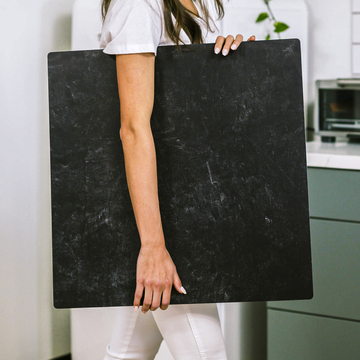When you think of concrete, you might picture city sidewalks or industrial lofts. But in the world of product photography, a concrete backdrop brings far more than just an urban vibe. Beneath its unassuming gray surface lies a world of technical magic that can transform your images into something truly memorable.
What most people overlook is how concrete interacts with both light and camera sensors. There’s science at work here-microtextures, color shifts, and reflection patterns-that separates an average product shot from a visually stunning one. Let’s take a closer look at how and why concrete backdrops could become your favorite studio tool.
The Hidden World of Concrete Texture
Concrete isn’t just flat and plain. Up close, it’s a dynamic landscape packed with tiny bumps, pits, and flecks of stone-a unique microtopography. Instead of reflecting light evenly, these microscopic features scatter light in countless directions. The result? Your camera picks up hundreds of tiny highlights and shadows, lending every shot a natural, three-dimensional quality.
- Built-in depth: Micro shadows and textures give your products real presence against the background, making them pop instead of looking “pasted” onto a flat surface.
- Soft, authentic look: The unpredictable light scatter helps avoid hard glares or shine, even under strong lighting.
How Your Camera Sensor Sees Concrete
With today’s ultra-capable sensors-think 24 megapixels and up-your camera can capture tiny nuances that the eye often misses. Concrete’s intricate details create subtle transitions and mini-contrasts that trick the mind into seeing more depth and dimension.
Here’s why it works:
- High resolution, high realism: Every micro-shadow becomes a visible texture in your photos, adding a natural “analog” authenticity.
- No gloss, no mess: Unlike shiny backdrops, concrete is naturally matte. Specular highlights (those glaring reflections) are virtually eliminated, giving a more consistent, professional look.
Color: The Underestimated Player
A surprise to many: authentic concrete isn’t perfectly neutral. Variations in mineral content, aggregates, and stains mean the backdrop often leans subtly cool, warm, or has faint earthy undertones. Your camera’s auto white balance might shift to “correct” these, which can slightly alter your product’s color in the final shot.
- Pro tip: Use a gray card or custom white balance to calibrate your camera before shooting. This helps preserve natural color while keeping your products true-to-life.
- Or, embrace the subtle unevenness of the color cast for a more handcrafted, organic look-perfect for brands that value authenticity.
Comparing Real and Faux Concrete Backdrops
While real concrete has its charms, many creators opt for high-quality faux backdrops like those from Replica Surfaces. These mimic all the visual complexity of real concrete, but with predictable patterns and colors. They're light, portable, and easier to keep clean-a huge plus for busy workflow.
- Go with real concrete if you crave that unrepeatable authenticity and will be doing extreme close-ups or macro work.
- Choose faux for convenience, consistency, and long-term reliability in your photo setup.
- Beware of low-quality prints: Cheap faux surfaces can look flat or pixelated, especially with modern high-res cameras. Always invest in a reputable, detailed backdrop.
Maximizing the Concrete Advantage
If you want to get the most out of your concrete backdrop, try these best practices:
- Side lighting rocks: Position your light so it rakes across the surface-this accentuates textures and depth without overwhelming your subject.
- Match backdrop to camera abilities: Shoot macro or close-up with real or ultra-high-res faux surfaces to make those textures shine.
- Mind your edits: In post-processing, balance sharpening and shadow recovery so the texture works for-not against-your product.
The Concrete Takeaway
A concrete backdrop doesn’t just serve up an urban look. It’s a technical powerhouse, rich with micro-details that make your products stand out. By understanding how a concrete surface interacts with your camera and light, you can harness its full storytelling power in your next shoot.
Want tips on workflow or selecting the perfect surface for your brand? Ask in the comments, or check out our in-depth guides on styling and lighting with Replica Surfaces. Give concrete a try-your camera (and your customers) will notice the difference.


